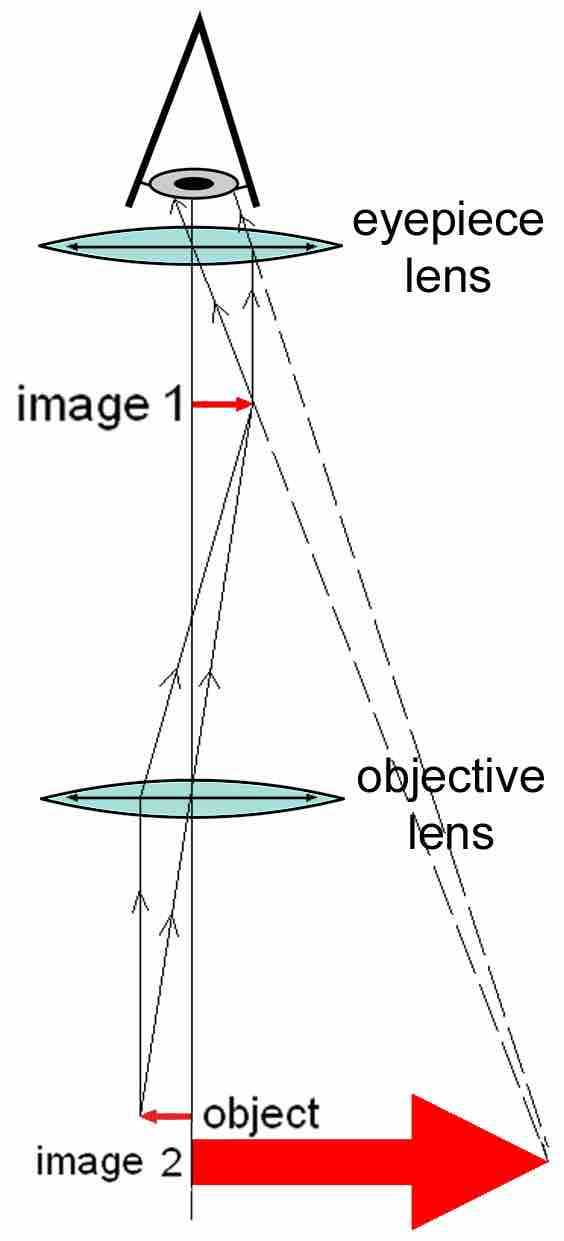A compound microscope uses multiple lenses to magnify an image for an observer. It is made of two convex lenses: the first, the ocular lens, is close to the eye; the second is the objective lens.
Compound microscopes are much larger, heavier and more expensive than simple microscopes because of the multiple lenses. The advantages of these microscopes, due to the multiple lenses, are the reduced chromatic aberrations and exchangeable objective lenses to adjust magnification.
shows a diagram of a compound microscope made from two convex lenses. The first lens is called the objective lens and is closest to the object being observed. The distance between the object and the objective lens is slightly longer than the focal length, f0. The objective lens creates an enlarged image of the object, which then acts as the object for the second lens. The second or ocular lens is the eyepiece. The distance between the objective lens and the ocular lens is slightly shorter than the focal length of the ocular lens, fe. This causes the ocular lens to act as a magnifying glass to the first image and makes it even larger. Because the final image is inverted, it is farther away from the observer's eye and thus much easier to view.

Diagram of a Compound Microscope
This diagram shows the setup of mirrors that allow for the magnification of images.
Since each lens produces a magnification that multiplies the height of the image, the total magnification is a product of the individual magnifications. The equation for calculating this is as follows:
where m is total magnification, mo is objective lens magnification, me is ocular lens magnification.